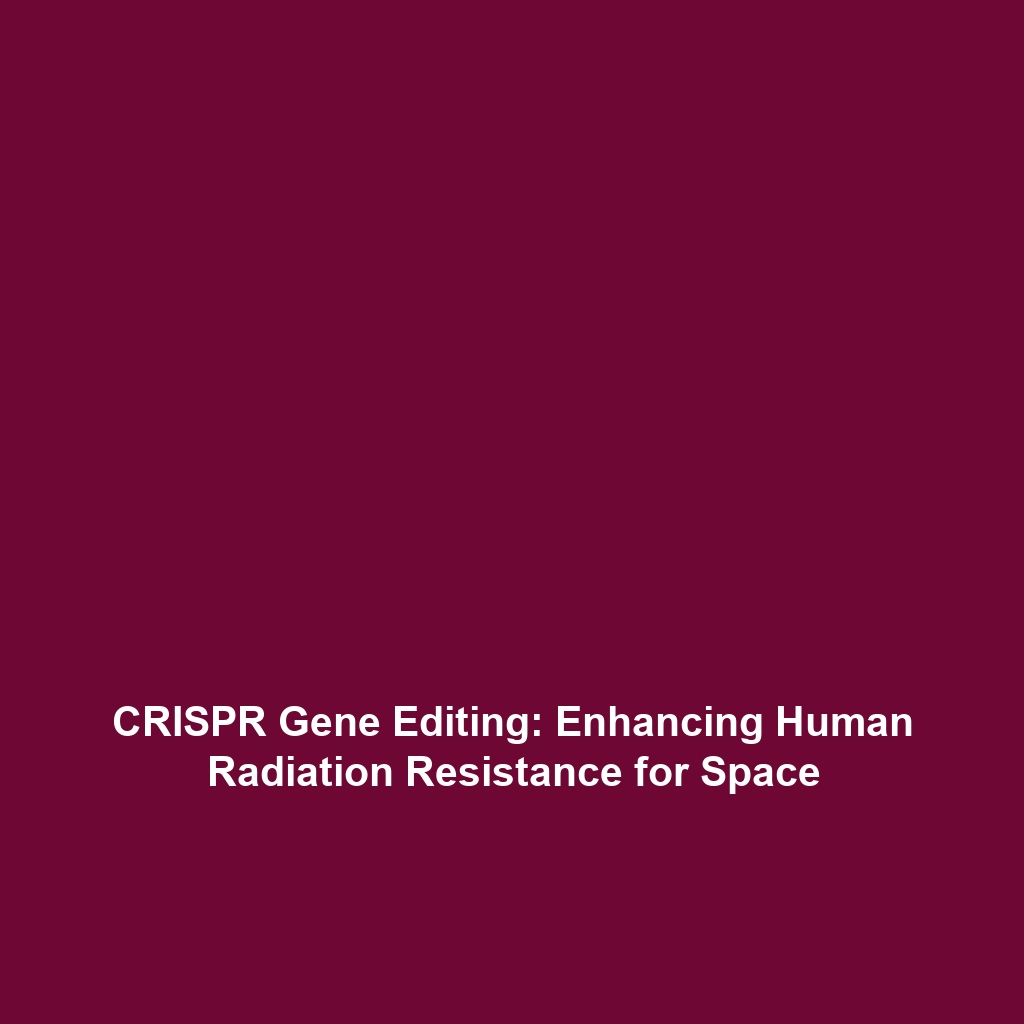The Potential for CRISPR Gene Editing in Enhancing Human Radiation Resistance in Space
Introduction
The potential for CRISPR gene editing to enhance human radiation resistance in space presents a groundbreaking avenue for future space exploration. As we venture deeper into the cosmos, understanding the interaction between human biology and extraterrestrial environments becomes increasingly vital. Radiation exposure in space poses significant threats to human health, including DNA damage and increased cancer risk. Employing CRISPR technology could offer innovative solutions for editing human genes to improve radiation resilience, thereby ensuring the safety and longevity of space missions.
Key Concepts
Understanding CRISPR
CRISPR (Clustered Regularly Interspaced Short Palindromic Repeats) is a revolutionary tool that allows for precise editing of genes. It operates by targeting specific DNA sequences and introducing cuts, which can enable the insertion or deletion of genetic material.
Gene Editing for Radiation Resistance
Research suggests that certain genes, such as BRCA1, are involved in DNA repair mechanisms that could be enhanced for better radiation resistance. The CRISPR technology allows scientists to modify these genes to increase their efficacy, offering a potential pathway for protecting astronauts from harmful space radiation.
Applications and Real-World Uses
The potential applications of CRISPR gene editing in enhancing human radiation resistance are vast:
- Space Missions: Editing genes could help protect astronauts during long-duration spaceflights, such as missions to Mars.
- Research & Development: Scientific investigations can use CRISPR to better understand gene functions related to radiation resistance.
- Therapeutics: Discoveries from CRISPR research could translate into medical treatments for radiation exposure on Earth.
Current Challenges
Despite the promising potential, there are notable challenges and limitations in applying CRISPR for enhancing radiation resistance:
- Ethical Concerns: Gene editing in humans raises ethical questions regarding consent and off-target effects.
- Technical Limitations: The precision of CRISPR requires rigorous optimization to minimize unintended consequences.
- Regulatory Hurdles: Regulatory bodies must establish guidelines for the safe use of gene editing technologies.
Future Research and Innovations
The future of CRISPR gene editing holds promise with ongoing research aimed at improving its effectiveness:
- Next-Generation CRISPR Technologies: Innovations such as CRISPR-Cas9 improvements and alternative systems like CRISPR-Cas12 are being explored for enhanced precision.
- Combination Therapies: Research may focus on employing CRISPR in conjunction with other protective strategies against radiation.
- Longitudinal Studies: Long-term effects of gene editing in human models will be necessary to fully understand implications.
Conclusion
The exploration of CRISPR gene editing to enhance human radiation resistance in space offers a significant leap forward for space exploration and human health in hostile environments. As research continues to evolve, it will be crucial to overcome the existing challenges while adhering to ethical standards. For further insights, consider reading about the role of genetics in space travel or advancements in radiation protection technologies.
This formatted article provides a thorough exploration of CRISPR’s potential applications in enhancing human radiation resistance for space exploration while being optimized for search engines using relevant keywords.
